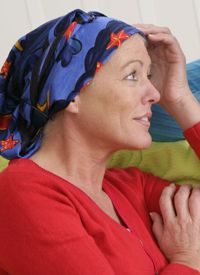Low-Level Light Therapy Shows Promise for Hair Regrowth After Chemotherapy
A recent study evaluated the effect of red light on hair growth in women with breast cancer.
Low-Level Light Therapy Shows Promise for Hair Regrowth After Chemotherapy

Nurses know that for their patients undergoing chemotherapy, hair loss is one of their most feared side effects. Although recent interventions involve cooling systems worn on the scalp to reduce alopecia during chemotherapy, there may now be a new option to improve hair recovery after the fact.
A recent study evaluated the effect of red light on hair growth in women with breast cancer. This low-level light therapy (LLLT), or photobiomodulation therapy, was originally approved by the FDA as a treatment for both men and women with pattern baldness. The results were presented this month at the 37th Annual Conference of the American Society for Laser Medicine and Surgery in San Diego.
Raymond Lanzafame, MD, CMS, director for the American Society for Laser Medicine and Surgery and researcher in the field of lasers and light applications in medicine, explained, “We hypothesized that a similar treatment strategy might be capable of stimulating hair growth in chemotherapy patients. The early results were more dramatic than we had expected.”
The study included 11 female patients with breast cancer, aged 20 to 60, who had completed adjuvant chemotherapy 1 to 4 weeks prior. After global scalp photography, researchers selected a scalp site and trimmed the remaining hair to 3 millimeter height. Baseline hair counts were at a median of 54.6 for the placebo group and 36.5 for the active group.
Patients were randomized into 2 groups: active treatment and placebo. The active treatment group was made up of 6 patients who received a bicycle helmet—like apparatus equipped with 5 milliwatt lasers and 30 LEDs. The placebo group, 5 patients, received an identical device, affixed with only incandescent lights. Both groups used their respective device at home for 25 minutes, every other day. Follow-up assessment was done at 3 and 6 months.
At 12 weeks, the placebo group had median hair counts of 199.4, and the active group was at 259.8, a 2.8-fold percentage increase for the experimental arm. After 24 weeks, the active group hair counts were at 283.5, whereas the placebo group had 236.3, demonstrating a 2.6-fold increase in hair counts from week 12 to week 24. No adverse events were reported.
Jeff Braile, the president of Apira Science, manufacturer of iGrow, the device used in the study, said, “The results of this study are extremely encouraging. We’ve known for some time that red light effectively treats androgenetic alopecia, but to witness that it can have a similar effect on chemotherapy-induced hair loss is groundbreaking. Hair loss as a result of breast cancer treatment can take an emotional toll on patients already going through a tough time, and we’re grateful that we can alleviate some of that burden.”
The researchers believe that these results warrant further study with larger groups.
Nurse Practitioners Weigh in on Data From the San Antonio Breast Cancer Symposium
January 16th 2023Loyda Braithwaite, MSN, RN, AGPCNP-BC, AOCNP; and Jamie Carroll, APRN, CNP, MSN, highlight presentations from the 2022 San Antonio Breast Cancer Symposium that will influence oncology nursing practice.


